Best smartwatches for cycling 2023: how to choose the right wearable for your riding
Here's our pick of the best smartwatches for cycling if you're thinking of tracking all your ride data from your wrist
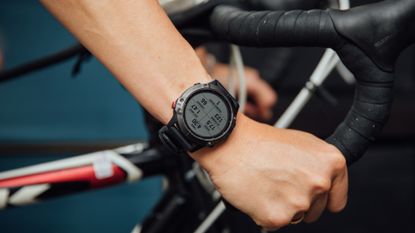
The latest race content, interviews, features, reviews and expert buying guides, direct to your inbox!
Thank you for signing up to The Pick. You will receive a verification email shortly.
There was a problem. Please refresh the page and try again.
The best smartwatches for cycling are becoming ever more sophisticated. Even the mid-range ones are starting to outperform some of thebest cycling computers: not only do they have the same level of functionality and post-ride data analysis but because they’re on your wrist they can be smarter, tracking what’s going on with your body when you’re off the bike as well as on it.
Because they’re on your wrist they’ll track pretty much any sport you do, whether that’s running, swimming, hiking, rowing, skiing or even golfing! You don't need a bike mount (although that's an option with some) and don't need to worry about removing it from your bike when you stop. It's not going to get as mud-splattered as a computer if you go off-road either.
Just like bike computers, GPS smartwatches will pair with peripheral sensors such asthe best power metersand heart rate monitors, and they now almost all have built-in wrist-based optical heart rate monitors. Depending on the model there's navigation too and top spec sports oriented smartwatches will supply all the metrics that a cycling computer does.
Our pick of the best smartwatches for cycling
You can trust Cycling Weekly.Our team of experts put in hard miles testing cycling tech and will always share honest, unbiased advice to help you choose.Find out more about how we test.
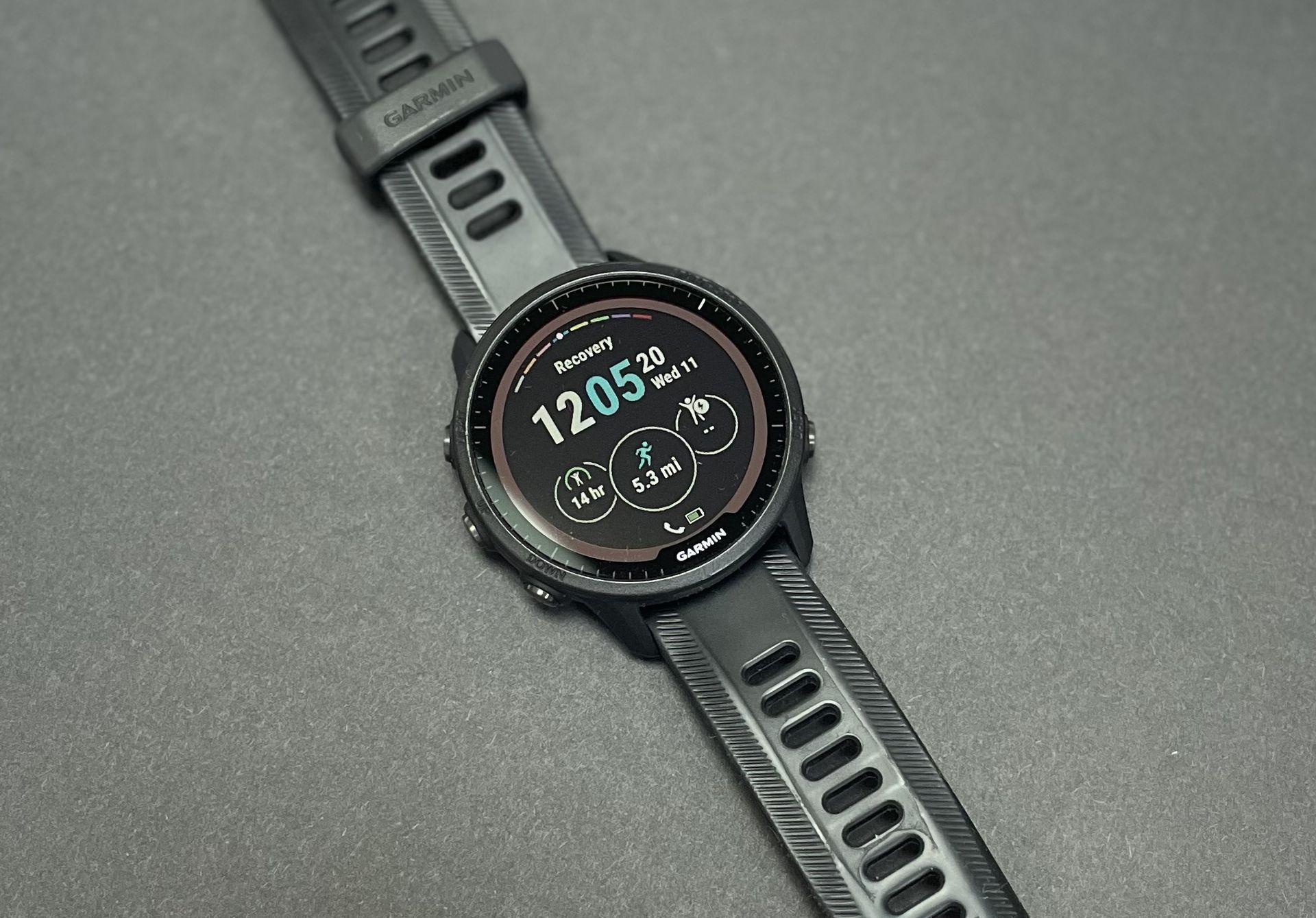
Specifications
Reasons to buy
Reasons to avoid
Garmin’s top-tier Forerunner 955 Solar is packed with features, making it more than just an activity tracker or GPS unit - though it does both of these things well, too.
This watch measures a huge amount of data, providing feedback on your recovery, training readiness, stress levels and more. It does this thanks to two light diodes situated on the back of the watch, which track your heart rate and your heart rate variability. From here it can measure your performance ability, and then track your progression and recovery accordingly.
As for the mapping, we found that the 33.5mm circumference display made iteasy to use and follow. By zooming in the maps clearly showed bridleways as well as splits in the route, certainly making it good enough to navigate by. Even when we tried to get lost, the zoom and scrolling features made it easy to get back on track.
As for battery life, during our four-month test it was nothing short of exceptional, lasting for over seven days per charge, even through the winter. The solar feature is likely to have a ranging appeal based on where you live and how much sunshine you see - the 955 is available without this function.
Read more:Garmin Forerunner 955 Solar smartwatch full review

Specifications
Reasons to buy
Reasons to avoid
The Wahoo Elemnt Rival shares the exact same user-friendly, intuitive functionality as Wahoo’s excellent cycling computers and uses the same app.
不仅如此,但相比其他smartwatchesit is lightweight and comfortable, the GPS is very accurate, battery life is incredible and the optical heart rate monitor could be the most reliable out there.
Wahoo calls it "radically simplified" – it doesn’t do navigation, sleep tracking or adaptive training guidance so you could say its functionality is limited compared to the more ‘wearable’ orientated watches, but Wahoo intends the Elemnt Rival to be a sports watch for more serious athletes who already know what they’re doing and where they’re going.
If you want a sports-focused watch with the trademark Wahoo clean design, reliable pairing and syncing, an intuitive app and exceptional battery life, the Elemnt Rival is it.
Read more:Wahoo Elemnt Rival smartwatch full review
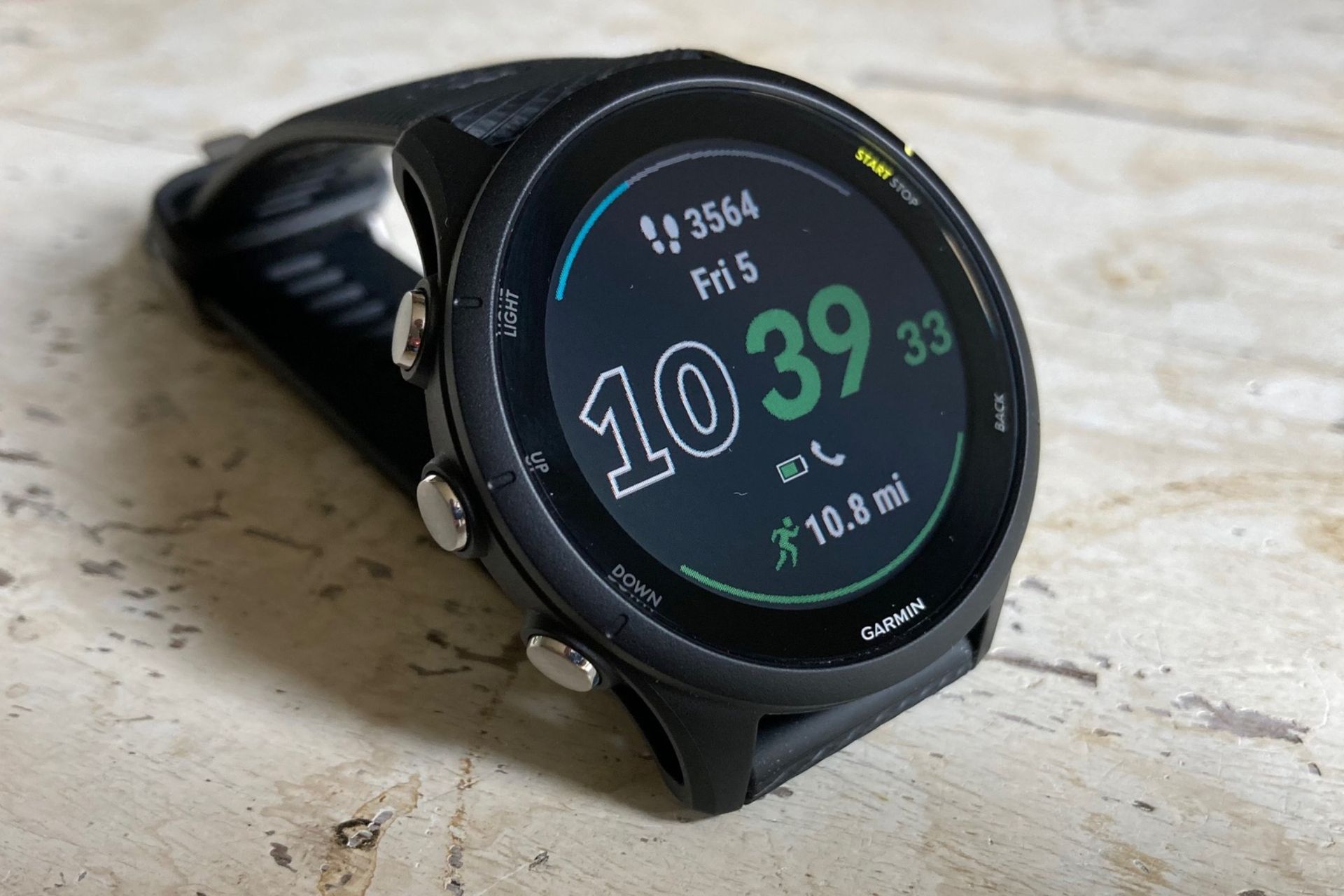
3. Garmin Forerunner 255
Our expert review:
Specifications
Reasons to buy
Reasons to avoid
The updates the Forerunner 255 received were huge when it launched in 2022, putting it up there in functionality terms virtually on a level with its big brother theForerunner 955as well as theFenix 7andEpix 2.
最明显的是它缺少映射,但它使用the same multi-band GPS for activity tracking as the more expensive Garmin watches and it has the same wrist-based heart-rate monitor, enabling the same health monitoring that includes sleep monitoring, heart rate variability, training stress and VO2max estimates.
There's no danger of the Forerunner 255 replacing your cycling head unit since it doesn't have mapping, but if you're already in the Garmin ecosystem with your bike computer and just want to add health monitoring without spending a fortune, the Forerunner 255 has the majority of it covered.
Since it's a mid-range GPS watch, the other thing the 255 lacks is an AMOLED touchscreen - it has a transflective memory-in-pixel LCD type. So if you want mapping and a brighter, crisper, prettier display it might be worth spending a bit more.
Read more:Garmin Forerunner 255 smartwatch full review
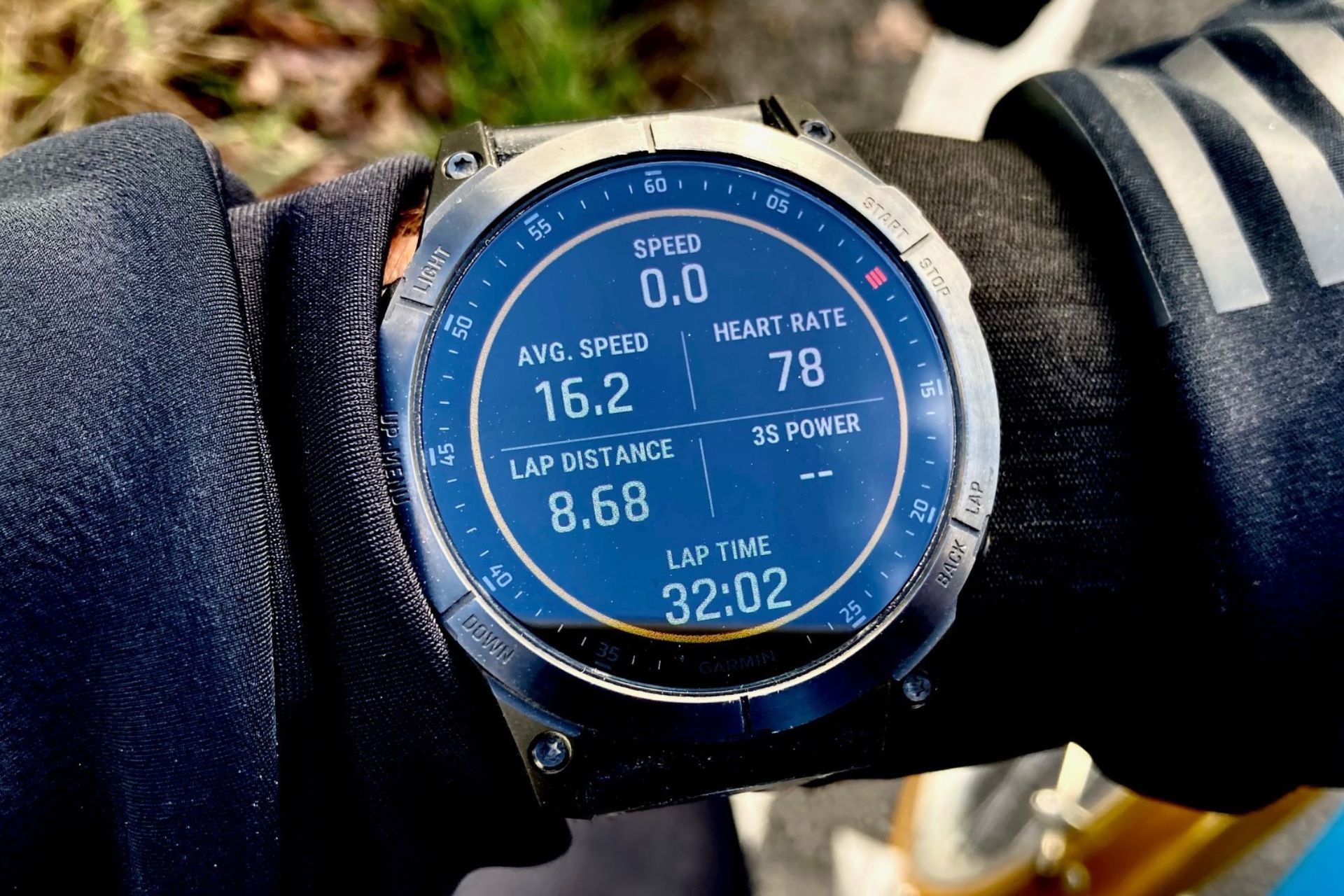
Specifications
Reasons to buy
Reasons to avoid
The Garmin Epix gives you much of the functionality of the Garmin Fenix 7, but with a much brighter, more colourful AMOLED touchscreen in place of the Fenix 7's MIP touchscreen. Although you don't get a solar charging option, unlike the Fenix 7, battery life is still good: around 6 days when using the GPS to track activities.
The functionality available mimics thebest cycling computersand you can use the Epix for navigation as well as linking up to a power meter or other device. Heart rate monitoring and pulseox are built in.
Wear the Epix 24/7 and it will give you the whole range of Garmin's health stats fromheart rate variabilitytorecovery timeandsleep quality. We were impressed enough to give the Epix a five-star review.
Read more:Garmin Epix smartwatch full review
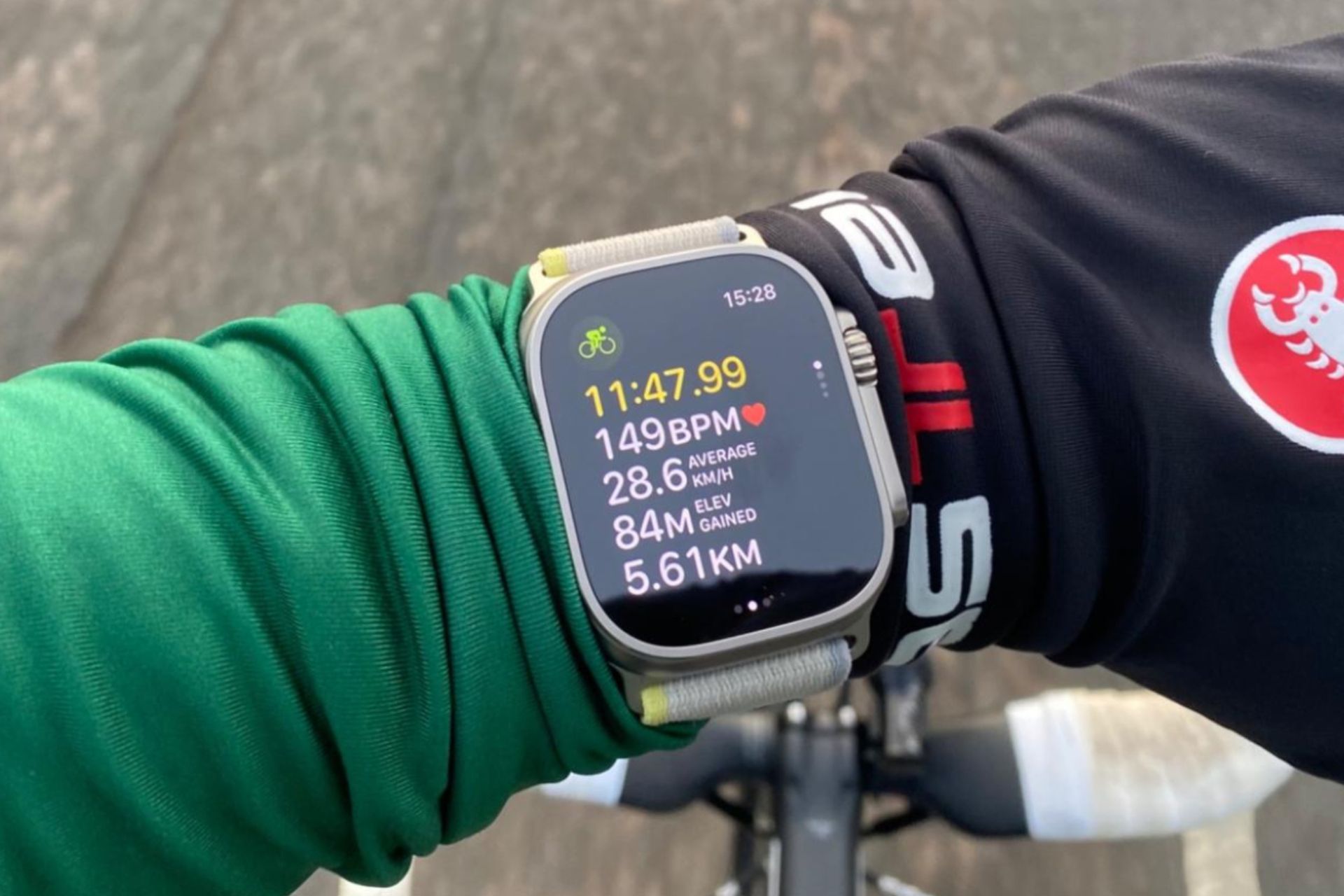
Specifications
Reasons to buy
Reasons to avoid
Designed to offer a longer battery life as well as being more rugged than other Apple Watch options, the Apple Watch Ultra is also larger, with a bright, always-on 1.9" sapphire glass touchscreen.
The built-in HRM tracked a chest strap closely and the GPS trace followed a cycling computer well. There's also HRV tracking, pulseox, body temperature and ECG built in and the Apple Watch Ultra provides accurate sleep tracking.
At around 36 hours, battery life is still not as good as the best smartwatches for cycling though and it needs to be paired with an iPhone to get the full feature set, although there is built-in cellular connectivity so you can use it without a phone for mapping, messaging and calls if you buy a SIM card.
Read more:Apple Watch Ultra smartwatch full review
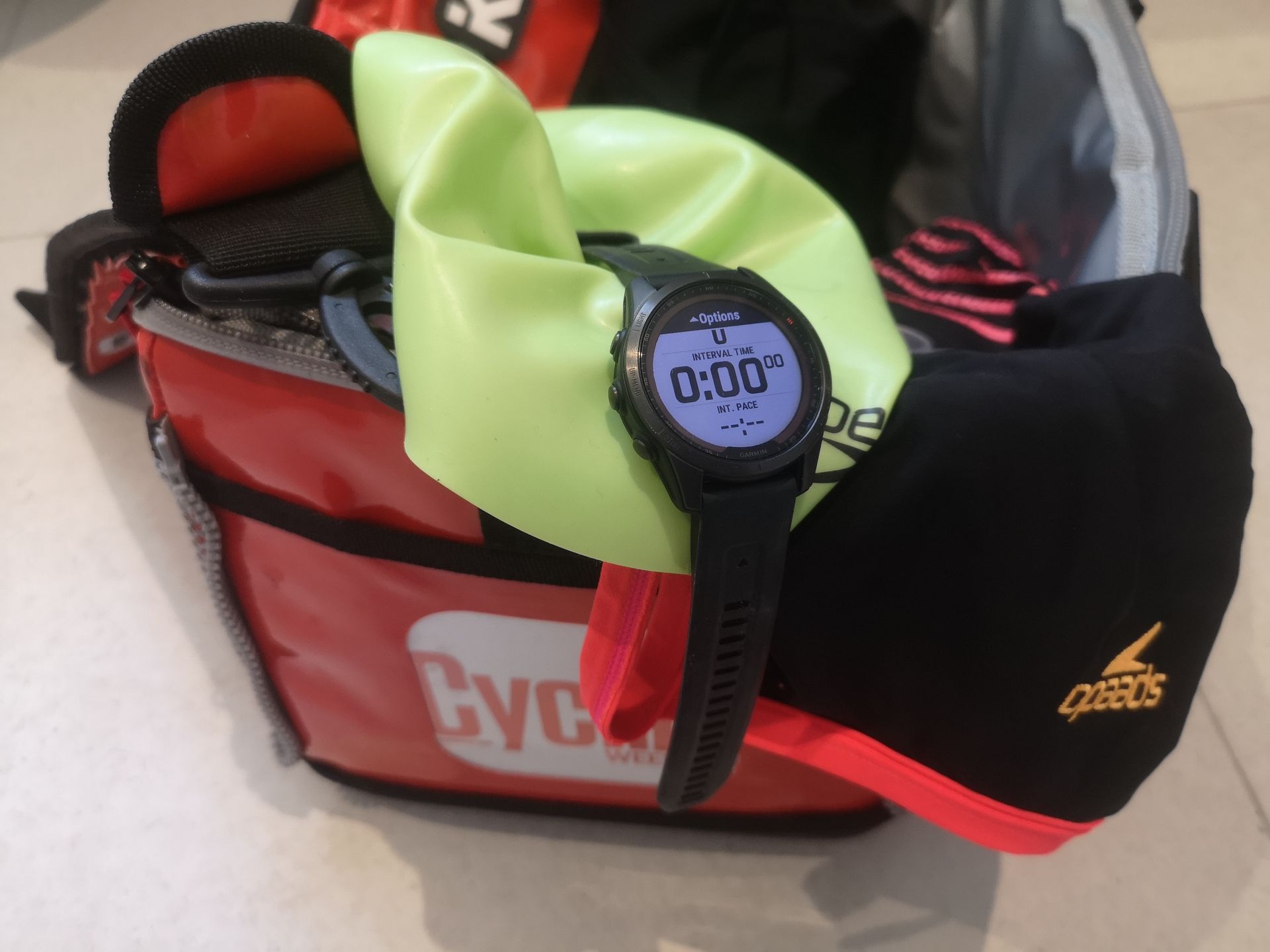
Specifications
Reasons to buy
Reasons to avoid
The Garmin Fenix 7 Sapphire Solar packs a lot of functionality into a watch-sized package. That includes not just GPS tracking, but Bluetooth, ANT+ and WiFi connectivity, optical heart rate measurement and pulse oximetry (measuring the oxygen level in your blood). That’s a lot of power hungry functions to keep running – a drain on your battery.
So Garmin has added a solar coating to the glass face of the Fenix 7 which turns the sun’s rays into a boost to the battery, offering up to 5 days of GPS tracking and 5 weeks in smartwatch mode. The Fenix 7 is available without solar charging too and in three different sizes, as well as with a variety of case and strap materials.
It does everything you might want and more, but once you’ve zeroed in on what you want to track it’s easy to use. Functionality includes basemaps, navigation and on-board music and there's a touchscreen interface alongside buttons, making it easy to use.
The Garmin Connect app’s interface is nice and it too can be customised according to your sporting interests.
Read more:Garmin Fenix 7 Sapphire Solar full review

Specifications
Reasons to buy
Reasons to avoid
The Suunto 9 Baro from the Finnish brand comes with a touchscreen and barometric pressure measurement.
It has a ton of functionality in a package that’s easy to live. It will give you as much data as you want to track your exercise and fitness as well as keeping track of your non-exercise activity during the day. The Suunto 9 Baro works as well for running, swimming, hiking or mountaineering: in fact, there are over 80 sport profiles available.
Suunto电池管理技术。当,给人留下深刻的印象n using the Suunto 9 Baro for a mix of activity tracking, all day wear, and sleep tracking we were always impressed with the battery life. You can expect the better part of a week to pass before thinking about charging.
Read more:Suunto 9 Baro full review
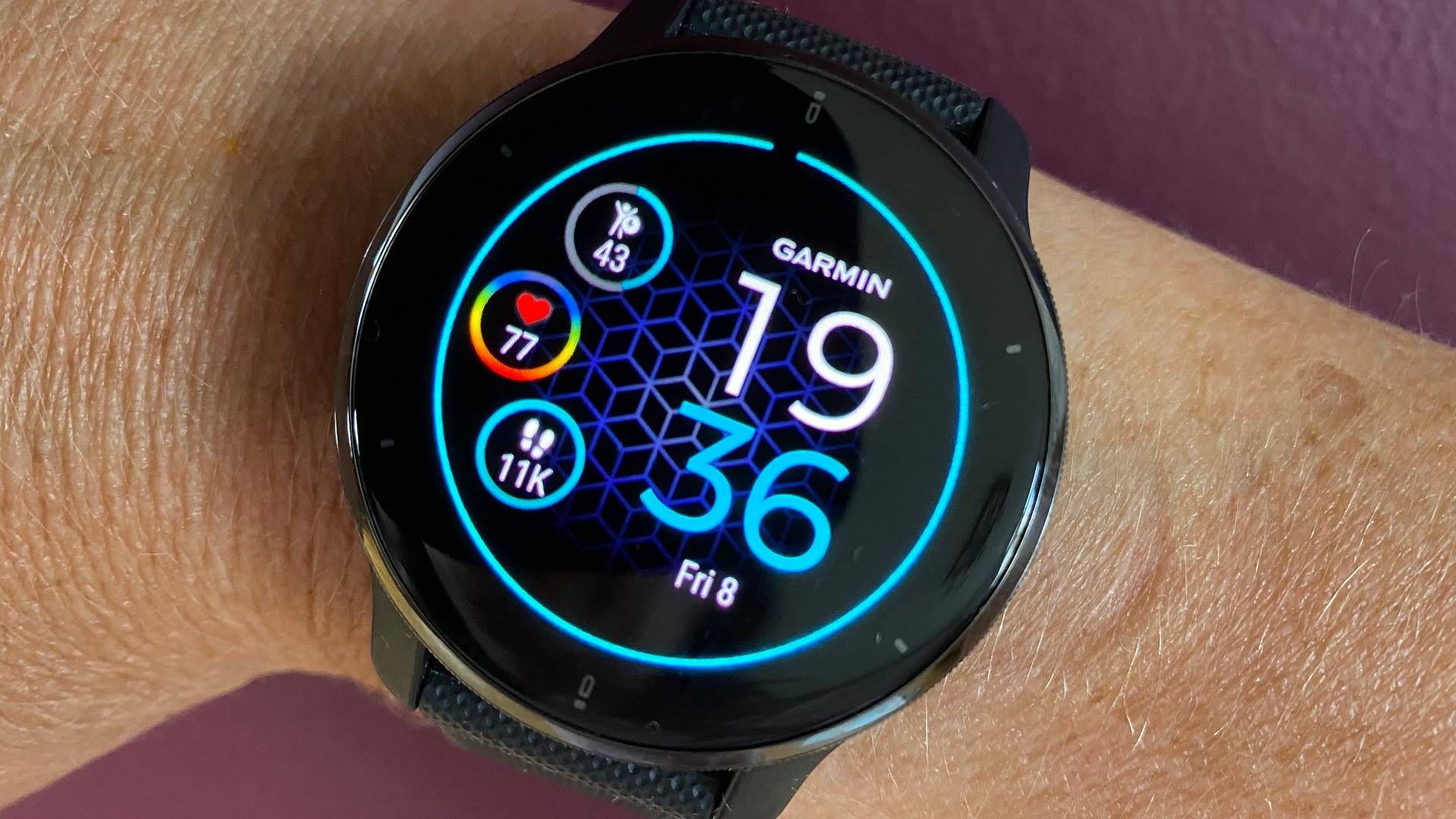
Specifications
Reasons to buy
Reasons to avoid
Garmin维纳2 +拥有一个非常明亮的Amoleddisplay which outshines many smartwatches and cycling computers and can be set to be always on or to light up when you move your wrist to see the face. There are loads of different case and strap options.
Control is via three buttons and a touchscreen and the Venu 2 Plus is fast to charge. It has good battery life too when GPS recoding and we got around 7 days between charges. You can also use voice commands, which are actioned via your smartphone app.
There's good functionality to record cycling, as well as other sports, and view metrics as you exercise. You can pair the Venu 2 Plus up with cycling peripherals like apower meter,heart rate monitor for cyclingor theGarmin Variaradar/light.
Read more:Garmin Venu 2 Plus smartwatch full review

Specifications
Reasons to buy
Reasons to avoid
The Coros Apex 2 Pro smartwatch has a five LED heart rate measurement system, which gives accurate heart rate measurement from the wrist. It's quick to set up and links easily to the companion app and Strava. There are a huge number of customisation options controlled via the app.
There are profiles for many different activities, not just cycling and running and the Coros will track sleep and heart rate variability. You can follow a GPX trace, but unlike some smartwatches, you don't get turn-by-turn directions.
Battery life is great - Coros claims 30 days per charge with 75 hours of GPS tracking, which we met or exceeded in our testing.
Read more:Coros Apex 2 Pro smartwatch full review
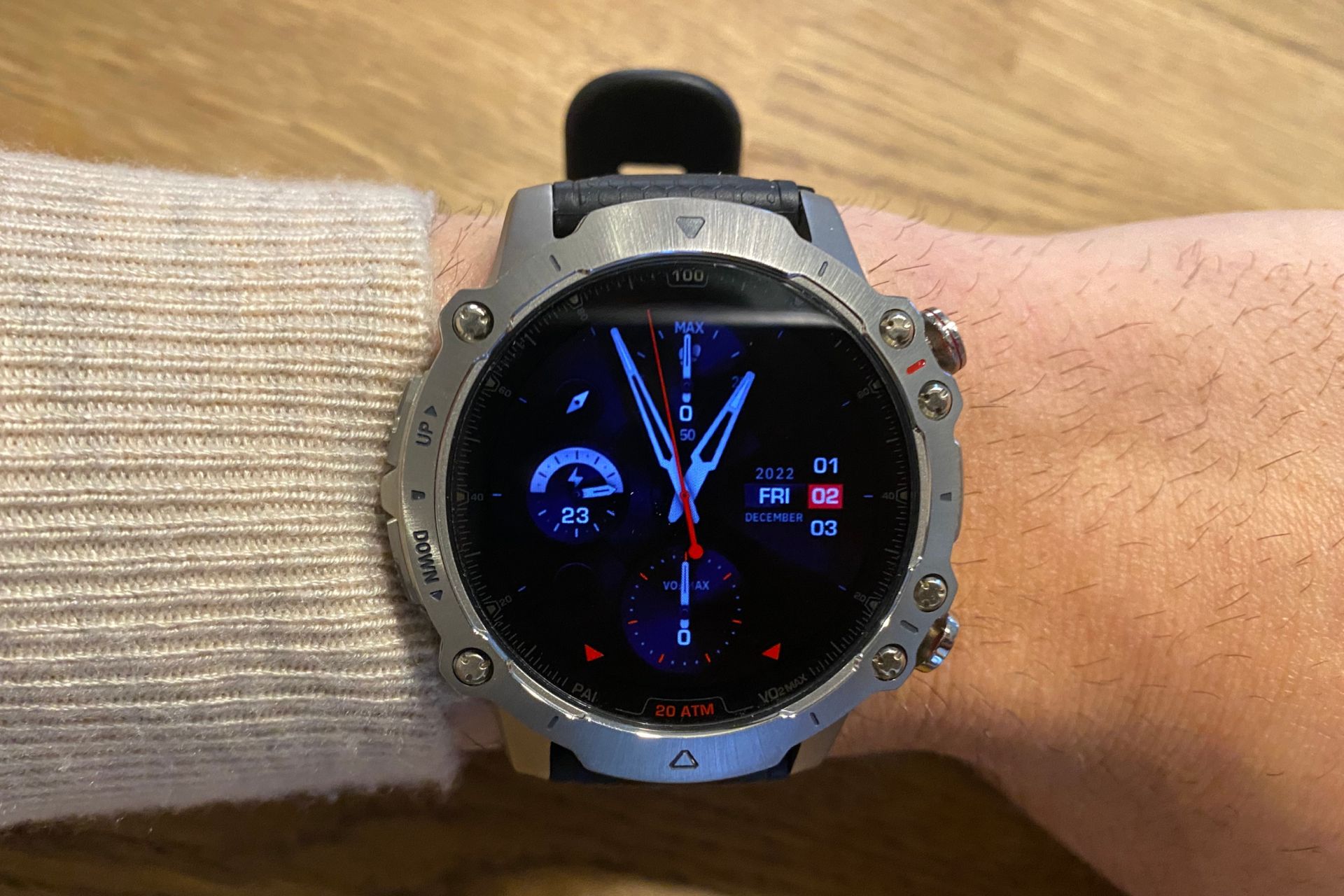
Specifications
Reasons to buy
Reasons to avoid
Made using titanium, sapphire glass, and liquid silicone for the strap, the Amazfit Falcon uses premium materials that are only available in competitor brands at a price hike. The $499/ £499 price makes this a high end smartwatch but several hundred pounds cheaper than alternatives from Garmin, Apple, and other brands.
心率数据可以有点打击和t小姐imes, but GPS was very reliable and lined up well with an Elemnt Bolt V2. The sleep tracking was also similarly good and seemed more accurate than other smartwatch models at correctly identifying dropping off and wake-up times, as well as nighttime restlessness. All the data is very easy to sync with third party apps, such as Strava, from the native Zepp app where your data is stored and can be analysed natively in.
The biggest selling point of the Falcon is the battery life. Only 14 days are claimed – and without heavy use – but our tester found that 20 days was easily doable, even when using it for accurate GPS tracking, which drains the battery faster. This is highly impressive and better performance even than the Garmin Fenix 7S with its solar panels.
Overall, this device is a great smartwatch for recreational athletes or those just looking to get a bit fitter, but the functionality of the watch needs some further refinement before it is practical for more performance focussed athletes.
Read more:Amazfit Falcon smartwatch full review

Specifications
Reasons to buy
Reasons to avoid
The 945 is the top of the Garmin Forerunner range. It has a huge array of features so that you can track pretty much any sport. As for its cycling-specific functions, is will pair with peripheral sensors via Bluetooth or ANT+, it has sophisticated navigation with turn by turn directions and full colour mapping and you can sync your music from select streaming services. So that you can pay for your post-ride coffee without digging out your wallet or smartphone, it has contactless Garmin Pay.
Sync to Garmin Connect for in-depth tracking of your training, sleep, and general life, and if you want feedback and guidance for future workouts it includes adaptive training plans.
It’s cheaper than the Fenix 7 and the Enduro and is less rugged, but functionality isn’t far behind for a much lower price.
Read more:Garmin Forerunner 945 smartwatch full review
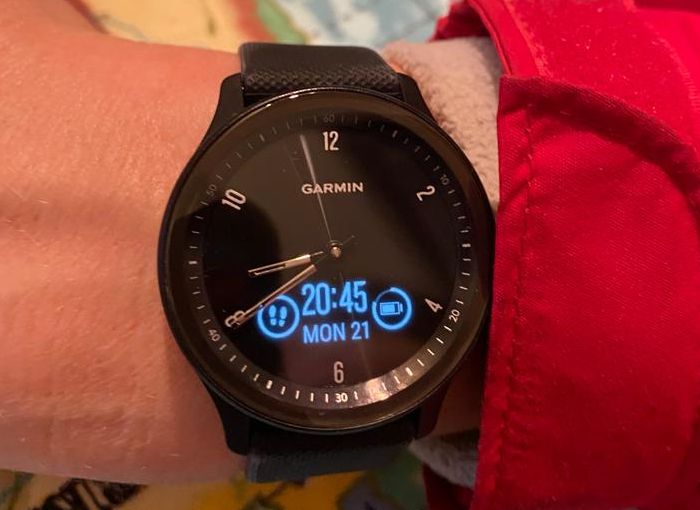
Specifications
Reasons to buy
Reasons to avoid
With a traditional watch face, the Garmin Vivomove Sport has a compact format. The use of real hands means that they can get out of sync with the actual time shown by the digital display when you ride or run off-road, though that's easily rectified.
There's a hidden touchscreen in the lower half of the watch face that opens up an OLED display with more data. You can customise what's displayed via the watch's settings menu.
Battery life is over 5 days, although it's severely impacted if you pair with another device like a phone, which you need to do to get a GPS signal as there's no on-board GPS chip. You can also pair to a Garmin cycling computer to broadcast your heart rate.
Read more:Garmin Vivomove Sport smartwatch full review

Specifications
Reasons to buy
Reasons to avoid
The Coros Vertix 2 is built for adventure; it's robust, with a large 1.4" touchscreen. That said, it weighs less than 100 grams. During testing we took it up mountains, on off-road rides and even a few open water swims and it remained unscathed, with no scratches or marks to either the face or the housing.
It comes with 32GB of memory, allowing for the storage of maps and music - over 10,000 songs in fact. As for the maps, it has two options: topographic and landscape.
The former is more detailed, showing your geographic position and elevation for both natural and man-made made features, while the latter shows street information and some natural features. When testing we found the landscape maps to be fine while cycling, but preferred the extra detail of the topographic option when running, especially on off-road routes.
As for these routes, uploading and updating was made quick and easy thanks to the Coros app and once loaded the maps page was nice and responsive.
But perhaps the Coros best selling point is the extensive battery life. On review we found that it only lost three per cent of charge per day on average, despite using it for running, cycling and swimming. It adds up to watch that only needs charging around once a month.
Read more:Coros Vertix 2 smartwatch full review
Buyer's guide to the best smartwatches for cycling
If you're not sure what features are important in a smartwatch for cycling, our buyer's guide will help you to choose the functions that make for a great smartwatch for the cyclist.

What materials do smartwatches use?
Most sports activity trackers are designed rugged, so that they will withstand knocks and shocks. They're usually waterproof enough for diving too.
More basic models will have a plastic case and strap, but spend more and you'll get a metal bezel or casing, might get a tougher glass face and may be able to purchase a metal strap too.
If your primary goal is sports tracking beware of flashy features though. We've tested high end smartwatches that are heavy and uncomfortable to wear, with sharp metal edges that dig into your wrist when holding the bars.
What features do smartwatches offer for cycling?
GPS tracking will be vital. More basic smartwatches may piggyback from a smartphone for the duration of your rides but now even Fitbit has built-in GPS in many of its fitness trackers.
Many multisport watches also come with barometers and altimeters. This is useful for accurate elevation profiles in recorded data.
Keep in mind though, more sensors mean a greater drain on battery life. They will need a bigger battery, leading to larger watches.
Even if you only use it for cycling, clearly a smartwatch needs to be water resistant. As a starting point we'd recommend an IP67 rating (IP is a rating of the watch's ingress protection – the higher the number, the better the protection).
Do I need a touchscreen?
Some smartwatches have a touchscreen interface, although most work with an array of buttons. Touchscreens can be very intuitive and easy to use off the bike, but when you're riding they can be awkward to operate, so having buttons as well is useful as a fallback.
The decision between touchscreen and buttons is more personal preference than anything else. Buttons can have a more tactile feel and guarantee impressions, whereas the quality of touchscreens, and their performance in wet weather, can vary from brand to brand.
On the other hand, touchscreen displays are often more aesthetically pleasing with less bezel and sometimes with smaller screens. Usually a touchscreen smartwatch will offer buttons too. It may only allow you to use the buttons to control functions during exercise to prevent you from inadvertently stopping recording as you ride.
What battery life can I expect?
最好的smartwatches包括复杂battery management functionality, that lets you eke out plenty of battery life between charges.
You can expect around a week of battery life from the best smartwatches, if you're just using them in smartwatch mode. That will drop significantly once you start to use the GPS chip to track your activities, but even so they should rival thebest cycling computers.
If you're going long, a good cycling smartwatch should include the option to dial down battery-intensive functionality to add days to its runtime. That might include lowering the sensitivity or sample rate for GPS tracking or turning off some connectivity functions or in-built sensors, or just powering up less of the screen.
Garmin has added to battery life by including the option to choose solar charging in some of its smartwatches. We didn't find it added much to battery life in the Fenix 6, but battery life has been significantly extended in its replacement Fenix 7. TheGarmin Enduro, also solar charged, is claimed to run for up to a year between charges in its lowest power mode and 95 days with low power GPS tracking.
When it does come time to recharge your smartwatch, most use a USB cable, although it might be one with a connector that's specific to your smartwatch.
What navigation features do smartwatches provide?
You can expect route planning and navigation in a smartwatch designed for sports. As a minimum look for a breadcrumb trail of a pre-planned route, but the more sophisticated will include a basemap too.
If you follow a pre-planned route, the best smartwatches will give you turn-by-turn instructions, just like a cycling computer. You may get in-ride rerouting, although you may need to carry your smartphone with you for this.
你可能会得到很多其他功能的最好的cycling computers like back-to-start routing, hill climb profiles and weather alerts.
What connectivity features should I look for?
Before you buy, check the compatibility of your power meter or cadence sensors with a cycling smartwatch. Some watches don't pair with external sensors, particularly if they're aimed at general fitness as well as cycling.
The best smartwatches for cycling include BLE connectivity to let you link up to these devices. Often you'll get ANT+ connectivity too on devices specifically designed for cycling and multisport tracking.
Optical heart rate sensors work by lighting up your capillaries with an LED. As your blood pumps through, the density changes and the light reflects back differently. The watch then translates this into a beats per minute reading.
Although many smartwatches have wrist-based heart rate monitoring built in, you may get a more accurate measurement if you wear a separateheart rate monitorstrap, as movement and sweat at the wrist can affect how well the optical sensor works.
If you already have an HRM, check that the smartwatch will work with it, although most modern HRMs will broadcast both BLE and ANT+ signals.
What health tracking features should I look for in a smartwatch for cycling?
Nearly all smartwatches track the same metrics as basic fitness trackers do. That usually includes step count, calorie burn and sleeping habits. That's usually integrated into an overview of your fitness and often tips and advice on how to improve.
Most of the latest smartwatches for cycling will record heart rate continually while you wear them, giving you a day-to-day record of your resting heart rate. You can use this to see the trend in your fitness level, if you're becoming fatigued,overtrained, ill – and if you're about to hit peak fitness. You may get a prompt from the smartwatch to rest up or do specific drills to help you hit your goals.
Some smartwatches include blood oxygen monitoring. It's useful for tracking adaptation toaltitude, but is quite power hungry and only works when you're not moving, so may only operate when you're asleep.
Another function that some smartwatches offer is electrocardiogram traces. You have to initiate these yourself; it's another function that may give you limited useful data.
Most smartwatches will include Bluetooth and/or WiFi connectivity and use this to link to a smartphone app and/or a computer app to upload activities wirelessly. The app will provide more health and exercise analysis and history and you'll get connectivity to Strava and training apps like TrainingPeaks.
What are the drawbacks of using a smartwatch for cycling?
Screen size is obviously limited in a smartwatch compared to thebest cycling computers. Some models with larger screens can get a bit chunky, so look out for a size that will feel comfortable to wear, particularly if you're planning to wear your smartwatch day and night for sleep tracking.
Just like with a cycling computer you can usually change what data is displayed on your screen, although you may have to limit how many fields are shown to fewer than with a cycling GPS. The small screen is more limiting with graphic content like routes and maps, where it may be difficult to zoom out or track around enough to see the bigger picture.
On the other hand, you can often set the smartwatch to vibrate to alert you to turns when navigating or to incoming messages from your smartphone.
Attached to your wrist, you may find it's harder to keep an eye on the metrics displayed on a smartwatch than on a cycling computer, which has its screen facing you. Some brands offer bar mounts to let you attach your watch to your bike for better visibility.
What triathlon-specific features do smartwatches provide?
If your exercise targets include triathlons, many smartwatches will include the ability to transition between activities. The Wahoo Elemnt Rival majors on this, with seamless transitions, but other brands like Garmin include this functionality as well.
Both these brands include functionality for mirroring, so that your cycling computer can display data collected during your swim and you get a holistic view of your performance.
Get The Leadout Newsletter
The latest race content, interviews, features, reviews and expert buying guides, direct to your inbox!
-
-
 UCI World Championships Elite Men's Road Race live: Race underway again after long delay for protest
UCI World Championships Elite Men's Road Race live: Race underway again after long delay for protestRolling report from the UCI World Championships Elite Men's Road Race
By Jack Elton-WaltersLast updated
-
 Men’s elite road race halted by protest at World Championships
Men’s elite road race halted by protest at World ChampionshipsScottish environmental group This Is Rigged claim responsibility for the disruption
By Tom ThewlisPublished
